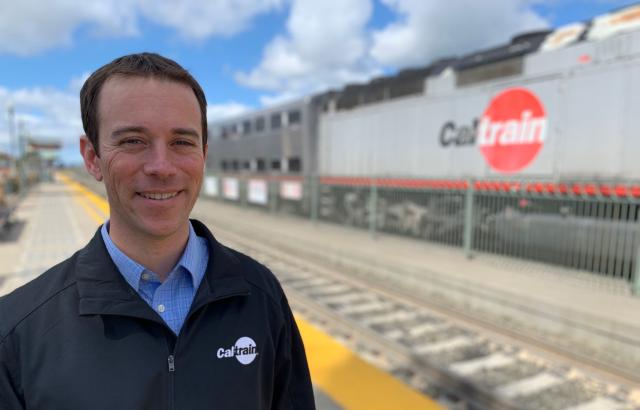By Alex Eisenhart | @AlexOnTransit | March 25, 2019
Caltrain’s ridership is growing. Since 2010, there’s been a nearly 75 percent increase in ridership--and the Caltrain Business Plan projects that by 2040, ridership demand will grow 300 percent. Currently people access the system in a variety of ways: walking (32 percent), biking (17 percent), transit (17 percent), vehicle drop-offs (17 percent) and driving/parking (17 percent). However, new advances in technology are making a variety of smooth access connections possible. Bike and scooter share, and other micromobility devices, offer first and last mile solutions; while electronic-lockers and on-demand bike sheds are revolutionizing secure bike parking. Historically, options to, from, and at stations have been limited, but stations can now be seen as an area of untapped potential. Caltrain recognizes the need to improve bike parking, access and micromobility at its stations and is working to support diverse modes of access to the system. In 2018, Caltrain received $3.5 million in funding to implement improvements. In addition, the agency is recruiting experienced individuals to help pave the way for a more sustainable transportation service. Meet Caltrain’s new principal planner tasked with improving station bike, micromobility, and pedestrian access, Dan Provence. Dan joins Caltrain after working more than 15 years for SFMTA doing bicycle and pedestrian planning. He also served eight years on Caltrain’s Bicycle Advisory Committee (BAC) as a government representative for San Francisco County. Just six months into this inaugural role, Dan talks about the progress being made.
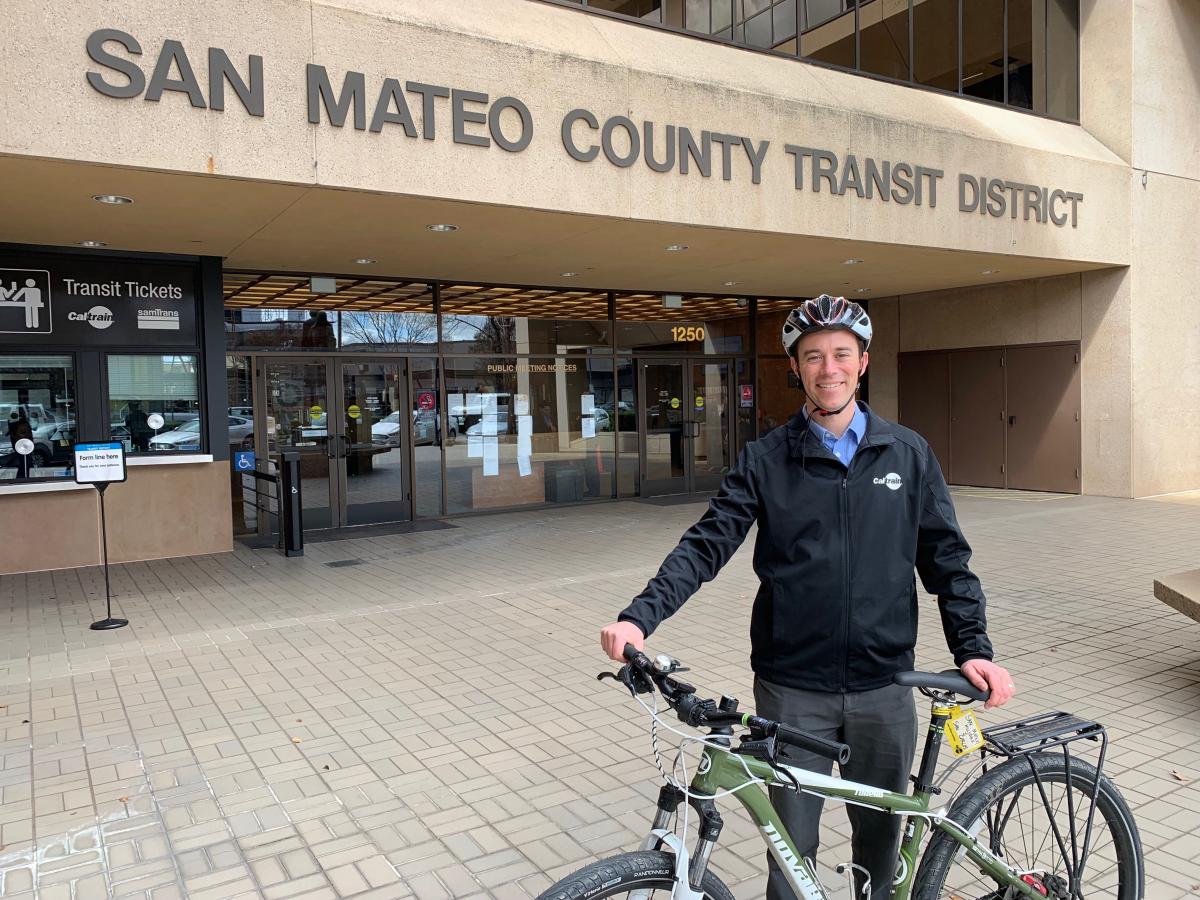
EISENHART: Dan, let’s start with a little background on you. Where are you from originally? What brought you into the world of bike planning? PROVENCE: Sure – I’m local to the Bay Area, born in San Francisco and raised in Pacifica. My parents and grandparents were born in San Francisco, so definitely a lot of history and a strong connection to the area here and I want to work to make it a better place. Growing up, biking was the only way I could really get anywhere without mom or dad driving me. Where I grew up we didn’t have great public transit, so from an early age I was riding my bike around to get to friends’ houses and have some freedom. Then I went to Cal Poly for college and didn’t have a car there – just rode my bike to get around. I was studying city planning and an internship came up with the City of San Francisco. It focused on making the streets safer for people walking and biking and I really enjoyed working on those types of projects because I personally appreciated the improvements that were going in. Little details are important with street design and my experience riding a bike helped me relate to residents’ concerns, sympathize with the challenges they had getting around the City on a bike, and design projects that worked well. My goal was always to make those trips around the City a better experience for them. I think biking is a great mode of transportation. It’s got health benefits, financial benefits, environmental benefits and it takes up less space. Not everyone needs to ride a bike, but everyone benefits from more people biking. Even if you never take a bike anywhere, a bicyclist is one less person you have to compete against for a parking spot. EISENHART: Any personal preference on the type of bike you like to ride? PROVENCE: I haven’t gotten a brand new bike since eighth grade. That bike was later stolen and I’ve ridden used, pre-scratched bikes ever since. Mine is a mountain bike with street tires, a rack and a trailer attachment. EISENHART: Do only use your bike to commute? Or do you ever participate in any bike events like races and whatnot? PROVENCE: I will go on some fun rides. My lovely wife and three boys all ride together. The older two are good on bikes and I throw the little guy in the seat of my bike trailer with me. At points, I’ve had two kids and four grocery bags in my bike trailer so I try to make it a pretty good part of my transportation. I live five miles away from work so I ride most days and sometimes take my bike onboard Caltrain to stay in touch with what other bike riders are experiencing. EISENHART: How did your relationship with Caltrain first begin? PROVENCE: My wife and I prioritized living near Caltrain when we moved to San Mateo nine years ago and we both rode our bikes to the station as part of our commutes to San Francisco. As a Caltrain customer and a person who took a bike on board, I was asked to join the BAC as a government representative for San Francisco County shortly after the committee was established. I learned a lot of the ins and outs about Caltrain and bikes, met the staff, etc. The BAC provided input to Caltrain staff that influenced some of the policies around bike accessibility. I hope that gives me some credibility with other people using a bike and Caltrain in my current role trying to improve facilities along the Caltrain corridor. There have been a lot of people involved in this work at Caltrain, but prior to my being hired there was no one solely dedicated to the bicycle planning and improvement work I am doing now. I saw a lot of opportunity here at Caltrain to make a difference for riders and the community at large. EISENHART: Tell me about your approach to this work long term? PROVENCE: I am always keeping the big picture in mind and I have a vision of tens of thousands of people getting to Caltrain stations on a bike. Using a bike is becoming more inviting all the time. Cities throughout the corridor are working to improve on-street bike facilities. Increased density is bringing more people within biking distance of Caltrain stations. E-bikes are making bikes accessible to more people. With all of these things happening, the potential for growth is huge.
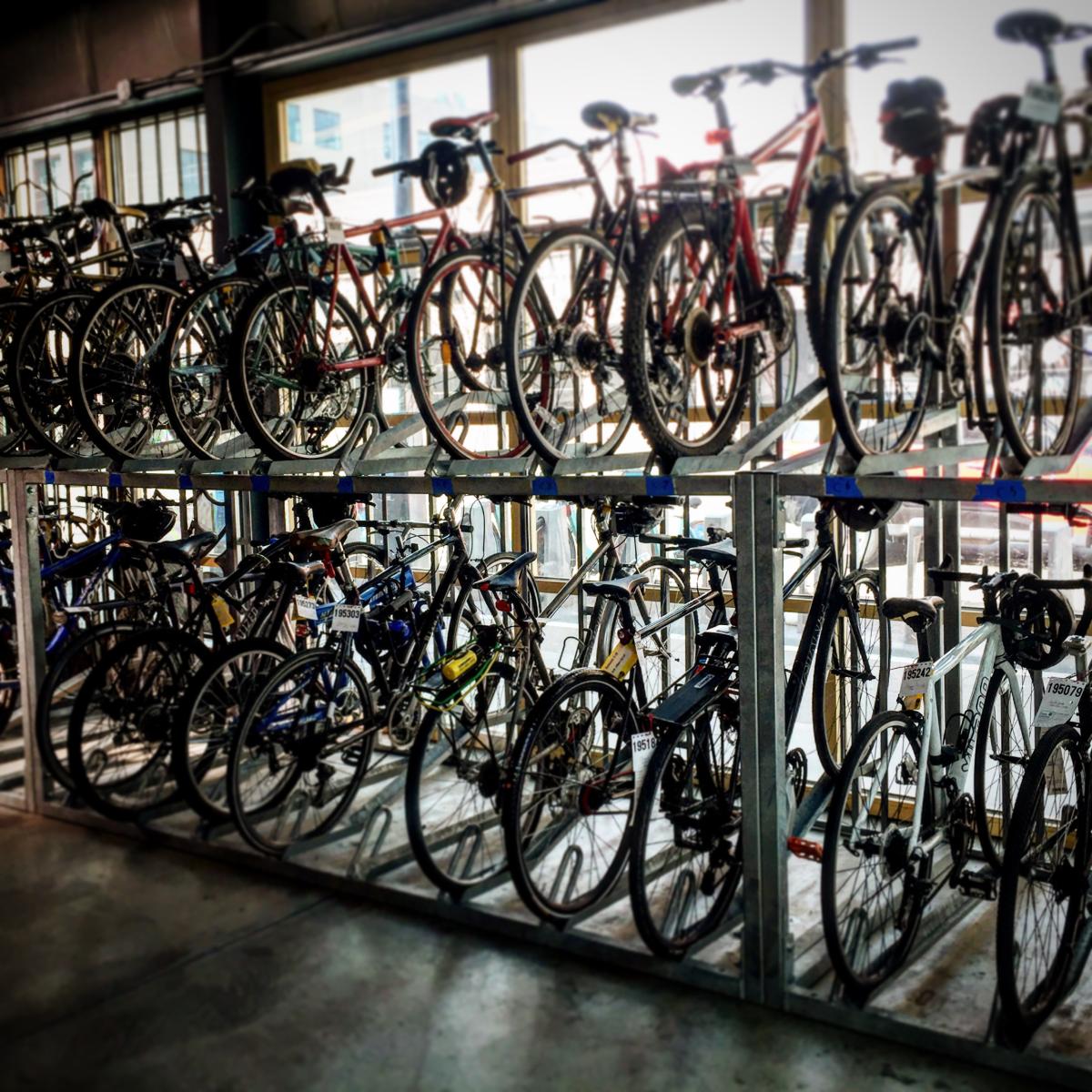
The current bike parking situation at many stations leaves a lot to be desired and I’m working on several efforts to make smaller, quick improvements to address the immediate needs but I’m also working on some much bigger efforts. One long-term project I’m working on is the San Jose Diridon station plan. We’re looking at station design concepts that include storage capacity for well more than 1,000 bikes. Today that station has less than 100 spots designated for bike parking. Grade separations are another great opportunity for bike accessibility along the corridor. The grade crossings often serve as a barrier for folks to get from one side of the tracks to the other. Putting in high quality bike and walking facilities as part of a grade separation is crucial. Grade separation projects also provide potential real estate for convenient bike parking under the tracks. Then there are short-term projects like upgrading existing lockers. Right now, we mostly have keyed lockers at Caltrain stations and availability is limited. I have some short-term initiatives to free up lockers for folks on the waiting list. I am also trying to install more electronic lockers. They’re on-demand and a more efficient use of space than keyed lockers that are rented exclusively to just one customer. It is important to have some short-term gains rather than just waiting for long -term changes to come later on down the road. EISENHART: Are there overarching solutions that you think should be applied to every station along the corridor? Or does it vary? PROVENCE: Overall, I want our solutions to be secure, reliable and convenient. The options we will provide definitely vary by station. We’ve got different levels of service at each station, so that’s going to have an impact on how we accommodate bikes. Some stations have big, half-empty parking lots while others are very confined in terms of available space. I am actually doing station assessments right now to determine their unique needs and how best to accommodate them. EISENHART: What are some of the hurdles to overcome in accommodating those needs? PROVENCE: We’re creatures of habit so it might be some work to convince folks that leaving their bike at a station is a good idea. But a lot of the people I’ve met in the bike car do have a grander vision for society that includes fewer people driving and more people riding bikes and transit. I’m confident that once these smart people consider the big picture with thousands more people riding bikes to and from Caltrain, they’ll be more okay with making some small sacrifices if it means making biking work better for many more people. Caltrain has historically accommodated bikes a certain way. With the projected increase in ridership, we’re going to have a space issue on the trains, even as they get longer and run more frequently. It’s simply unsustainable to keep taking up more space onboard the train for bikes because we already don’t have enough seats on a lot of trains. Fortunately for us, there are great solutions out there. The best practices around the world show us that when large numbers of people arrive at a station by bike, the practical way to serve those people is at the station. That’s what I’m here to achieve.
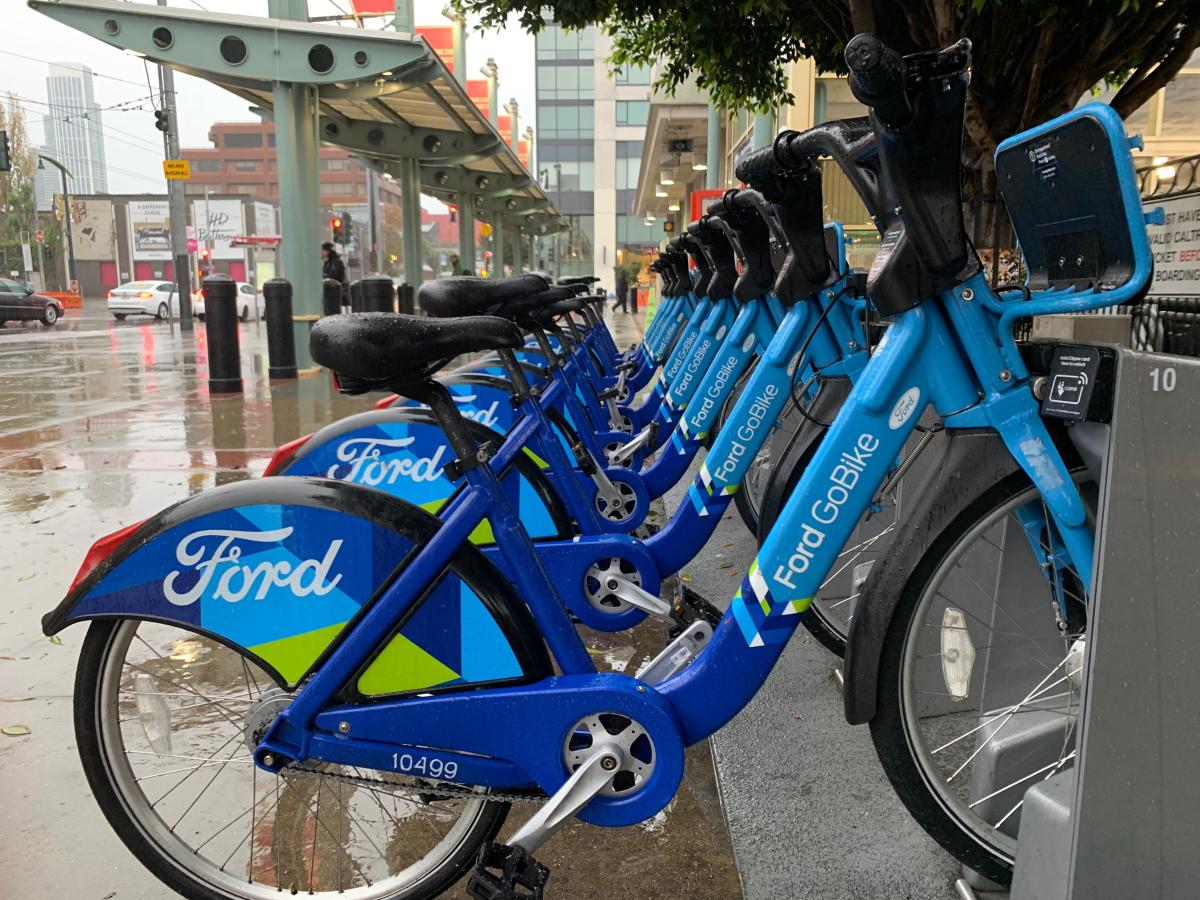
We’ve done surveys to better understand the needs of bike riders. One potential option is for customers riding their own bike to get to the station, securely storing it there at the beginning of their commute and using a bike share service on the other end. I see that as an increasingly viable solution. There’s work to be done to make sure bike share is a reliable option for people but I’m excited about the increased freedom that some new models are rolling out as well as the increase in electric assist bikes. There are also infrastructure hurdles to overcome. Some of our stations have been designated as historic sites and structures, so when you propose installing shiny new bike lockers there can be issues with that. I am looking for ways to address those concerns. There’s also challenges around access. Some of our stations are not easy to get to by any mode other than a car, so I’m working with some cities to address bike access to Caltrain as cities update their bike and pedestrian plans. EISENHART: How do you prioritize projects? PROVENCE: Two of the biggest factors are bang for the buck and greatest need. In Santa Clara, Capital Corridor has some funds available for electronic bike lockers at our joint station, so we may partner with them on that effort. The San Carlos Transit Village is almost complete and there’s funding from the developer specifically for bike parking, so that has become one more immediate priority. We’re fortunate to have valuable ridership data that shows us where capacity issues exist along the corridor, which also helps prioritize projects. I’m looking at prioritizing things where we have the highest numbers of people on the trains, where you’re most likely to get bumped. EISENHART: What kind of support have you received from the Caltrain Board in regards to expanding bike parking at stations? PROVENCE: I am really excited about the Caltrain Board’s recent decision to purchase additional electric trains for many reasons, one of which being the allocation of $3.5 million for bike parking improvements. The station assessment currently underway will help us determine how best to spend that money.
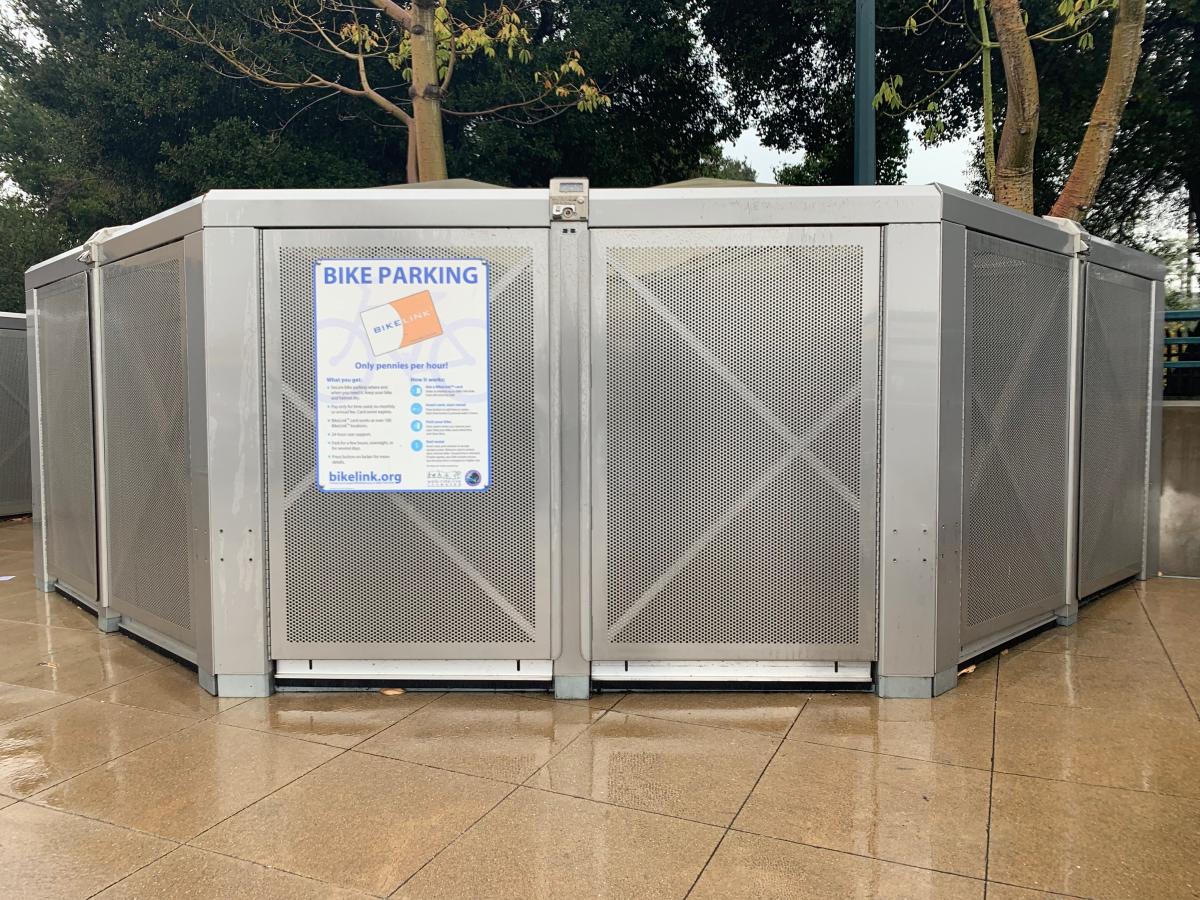
Now, $3.5 million may sound like a lot of money, but costs do add up with some of these projects. Electronic lockers, for example, cost $3,500 each. A thousand of those quickly adds up to $3.5 million! I am trying to provide way more than 1,000 bike parking spots between San Francisco and Gilroy, so we’ll be looking at ways to share that costs with partner agencies and explore a variety of options that are both cost effective and accommodating to the needs of our riders. That being said, we do have a great head start and there’s additional grants available to further assist our efforts. EISENHART: It’s worth pointing out that that solution recently hit a snag when Lime Bike announced they were pulling out of South San Francisco, Burlingame, San Mateo, Mountain View and Sunnyvale. What are your thoughts on that? PROVENCE: It’s unfortunate, but I think there’s an opportunity here. A lot of cities were taking different approaches to bike sharing, which can create a barrier for commuters when there’s inconsistencies along the corridor. So I think if we can get cities on the same page we can make it a cleaner, more consistent system for users and help eliminate barriers through the creation of a common vision for bike share. We’ve seen what can happen when there is a strong bike share system in place along the Caltrain line. The bike share at 4th & King is the busiest bike share station in the Bay Area. I think there’s a lot of potential to make it a viable mode of transportation throughout the corridor. EISENHART: You have a history of working on bike projects. How is that helping you work with bicycle advocates as a Caltrain planner? PROVENCE: We have a history together and we have common goals. Many people know that I ride a bike regularly. I’ve had a bike stolen. I’ve been bumped. And I take their input and feedback very seriously. Early on in my career I worked on a project where bike advocates and residents were at odds over a trial bike boulevard type project. Things got really contentious and it was ultimately removed. But I learned so much from that experience that helped me frame things in a way where cyclists and residents who never got on a bike could see benefits of a design. That’s what I hope to accomplish at Caltrain. I want to find solutions that strengthen the future of Caltrain’s service for the benefit of all riders, including folks like myself who ride a bike. EISENHART: Favorite project you’ve ever worked on? PROVENCE: I worked on a lot of projects I’m proud of, but I’d have to say the Folsom Street bike lanes through the Mission. I feel like that project is pretty well loved by people. It started as a four lane street and we removed a lane of traffic and put bike lanes in. There’s a great tree canopy and the signals are timed for people riding bikes. It’s a really nice place to ride a bike. I want people to be able to get to work safely and get home safely, so I’m proud to have been a part of that project. EISENHART: What do you say to a Caltrain rider with a bike who’s fed up? PROVENCE: I say, thank you for being a dedicated Caltrain rider and riding a bike. I am doing my best to create great options for you to use a bike on both ends of your train ride. I can’t promise you’ll always be able to commute exactly the way you do today, but I am working to create a system that’s secure, convenient and more in line with what other railway providers with many more cycling customers are doing around the world. EISENHART: Final thoughts? PROVENCE: As we make it easier and more secure to park bikes at our stations and continue to collaborate with bike share companies and other transit alternative organizations, we can create more sustainable solutions that truly benefit all our customers.
###
